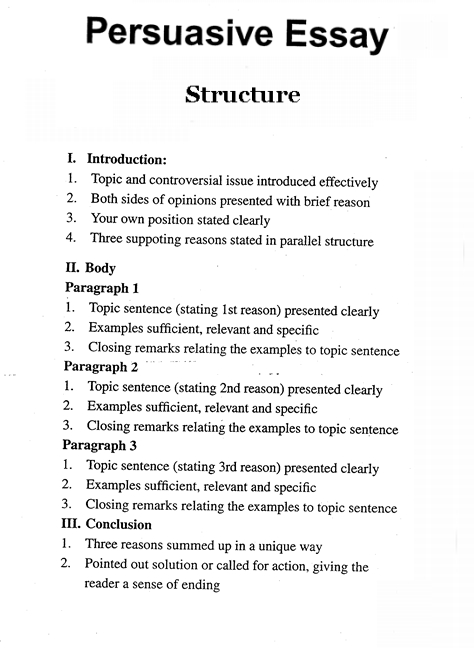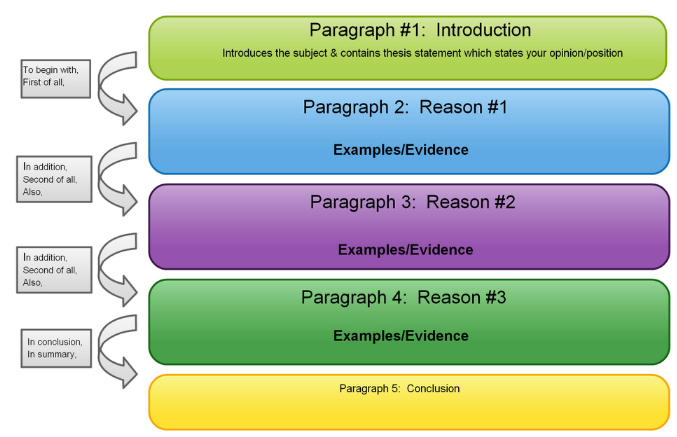Essay Rubric (PDF version)
|
English: Writing And Representing
|
Excellent
|
Very Good
|
Satisfactory
|
Min. Acceptable
|
|
Write purposeful information texts that express ideas and information
using the persuasive essay format
|
Clearly follows the persuasive essay format in an interesting and engaging
|
Clearly follows the persuasive essay format
|
Follows the persuasive essay format with some minor omissions or
changes
|
Loosely follows the persuasive essay format
|
|
Applies writing conventions in written work.
|
|
|
|
|
|
-Sentence Structure
|
·
Little to no confusing or unclear sentences. Excellent
language use and sentence variety.
|
·
Little to no confusing or unclear sentences.
Good language use.
|
·
Some confusing or unclear sentences. Does not
interfere with meaning
|
·
Many confusing or unclear sentences.
Interferes with meaning
|
|
-Writing Basics
|
·
0-1 errors
|
·
2-3 errors
|
·
4-5 errors
|
·
6+ errors
|
|
Successfully integrates persuasive devices and elements in essay:
o Allusion
o Anecdote
o Appeal
to authority
o Hyperbole
o Irony
o Repetition
o Rhetorical
questioning
o Sarcasm
o Simile
o Slang
o Declarative
Sentences
o Exclamatory
Sentences
o Imperative
Sentences
o Interrogative
Sentences
|
Integrates 11 or more devices
|
Integrates 8-10 devices
|
Integrates 5-7 devices
|
Integrates 3-5
|
|
English: Reading and Viewing
|
Excellent
|
Very Good
|
Satisfactory
|
Min. Acceptable
|
|
Shows an understanding of use of devices in persuasive writing and
representing
|
In conversation or highlighting, can correctly identify 11 or more
devices in essay and why they fit the definition
|
In conversation or writing, can correctly identify 7-10 devices in
essay and explain why they fit the definition
|
In conversation or writing, can correctly identify 4-6 devices in
essay and explain why they fit the definition
|
In conversation or writing, can correctly identify 3 or more devices
in the essay but may not be able to explain why they fit the definition
|
|
Supports opinion using sources as evidence
|
·
Legend used to an excellent degree, with no
major areas needing sources.
·
Symbols have been converted into numbers.
·
Quotations are introduced by the source so
listeners will have information.
·
All quotations are a sentence or less in
length.
|
·
Legend used to a very good degree, with little
to no areas needing sources. Symbols have been converted into numbers.
·
Quotations are introduced by the source so
listeners will have information.
·
Most quotations are a sentence or less in
length.
|
·
Legend used to a good degree,
·
some areas where it is put in own words need
sources.
·
Some quotations tell source in the sentence introducing
them.
|
·
In essay, legend used to a minimal degree.
·
All directly quoted material is sourced.
|
|
Socials: Application
|
Excellent
|
Very Good
|
Satisfactory
|
Min. Acceptable
|
|
Defend a position on a controversial issue
|
Develops argument using compelling information and research for every
body paragraph
|
Develops argument using strong support for every body paragraph
|
Develops argument with strong support for most body paragraphs
|
Develops argument with some support
|
Examples:
Quotations introduced by the source:
According to Rick Mercer, “There really is very little left
to say about Rob Ford.” 1


